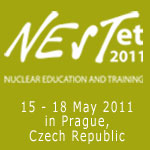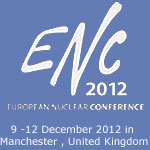ENS NEWS N° 32 (spring 2011): Intro
While ENS NEWS N° 31 charted new waters with a first-ever “special” devoted exclusively to one subject - education and training - N° 32 sees us return to the comfortingly familiar surroundings of a “normal” edition. And yet this edition bears more than a passing resemblance to its predecessor, insofar as once again one subject dominates its columns. The calamitous sequence of events that unfolded at the Fukushima nuclear power plant after the unprecedented earthquake and tsunami has, to a varying degree, dominated our agendas. The 25th anniversary of the Chernobyl accident, on 26 April, will give added significance to the accident at Fukushima. Indeed, comparisons between the real and perceived dangers of both accidents are already common currency. With old fears and legitimate concerns having inevitably put the nuclear industry in the international spotlight now is a time for clear heads and a considered response, not for faint hearts or hesitation.
More than ever it is incumbent upon the nuclear community to reiterate its commitment to promoting the highest possible standards of nuclear safety. That goes without saying and may appear to some to be a self-evident platitude; after all, safety has always been our top priority, so nothing has changed there. Well, we may take it as a given that our nuclear power plants are safe, but we haven’t always succeeded in communicating that fact clearly and unequivocally to a wider public. Since the events of 3/11 failure to communicate this fact is simply not an option. Safety must be seen to be one of our “core values.” At a time when emotions are running understandably high the need for careful reflection and for the presentation of facts based on scientific rather than partisan considerations is paramount. Calm analysis rather than hasty judgement is the order of the day. Equally important is the need to show and convince people that we have learned the lessons of the past and will apply then to the present and the future.
So, not surprisingly then, events at Fukushima and Chernobyl feature regularly in ENS NEWS N° 32. We kick off with an ENS NEWS section almost entirely devoted to analysis of events in Japan. First up, the Word from the President piece outlines chronologically the action that has been taken to produce the safety risk and assessment tests that will be carried out at all of Europe’s nuclear power plants. Andrew Teller then gives his personal take on the likely repercussions of 3/11on future nuclear power generation in general. This is followed by the ENS High Scientific Council’s official statement about Fukushima. Finally, the section includes an OECD/NEA abstract on the subject of medical isotopes that was submitted to the RRFM conference in Rome (20 – 24 March 2011).
The ENS Events section features a teaser on the upcoming NESTet 20011, an ENS conference dedicated to the subject of nuclear education and training.
The Member Societies and Corporate Members’ section features contributions from the Hungarian Nuclear Society, the Belgian Nuclear Society, SCK-CEN, the Finnish Nuclear Society, the Spanish Nuclear Society and the Bulgarian Nuclear Society.
The YGN Report section contains an article written by the Czech chapter of the YGN (on PIME 2011, in Brussels, 13 – 16 February 2011) and a piece from Belgian YGN chapter on the first edition of their new newsletter.
The ENS World News section features a press release detailing the recent launching of WiN Europe and some recent articles from NucNet (no prizes for guessing what subject has been dominating the international nuclear press of late!).
Enjoy ENS NEWS N° 32 and don’t forget…your comments and suggestions are always welcome.
|

Mark O’Donovan
Editor-in-Chief, ENS NEWS
|
|
|




